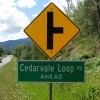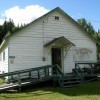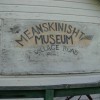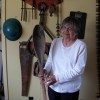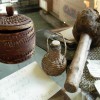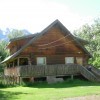Cedarvale
From Kitwanga to Cedarvale it is a 26km drive. Going east from Terrace to Cedarvale will be a 117km drive.
Cedarvale, also known in the Gitksan language as Meanskinisht, is an unincorporated community in the Skeena River Valley in northwest British Columbia. The village was called the Holy City by the workers on the paddlewheel steamboats because if they arrived on Sunday they had to leave the mail bag and other goods on the shores as they were not allowed to work on Sundays in the village.
Formerly known as Gitlusec with 16 Houses of Assembly before the arrival of the European missionaries, the government of Canada's Indian agents and the RCMP. The descendants of the Gitlusec are still here. The village is on both sides of the Skeena River, Cedarvale north and Cedarvale south. Cedarvale south is easily entered from Hwy. 16. Meanskihnsht village, which means "Beneath a Pine Tree" was established by Rev. Robert Tomlinson Sr. and named by him. A huge Pitch Pine tree stood at the head of the village when the people were clearing land for the Meanskinisht Village. The Tomlinson family were transported to the village in 1887-8. They travelled in two canoes belonging to Samuel Bright Sr. and each weighed 1,814 kg (2 tons). Joah of Gitlusec who lived on the Island close to the south shore welcomed the Tomlinsons. Education was the goal of Meanskinisht village.
The Grand Trunk Railway came through the village in 1913. A post office was established in Robert Tomlinson Jr's home, along the rail tracks. A telegraph line was set up and Samuel Bright Sr. made the first telegraph call. The language of this village is Gitksan.
